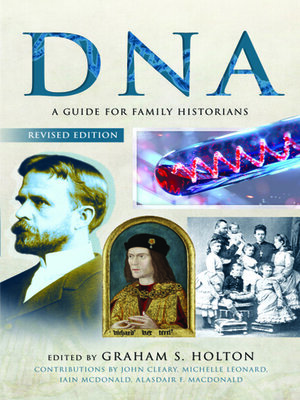Tracing Your Ancestors Using DNA--Revised Edition
ebook ∣ A Guide for Family Historians
By Graham S Holton

Sign up to save your library
With an OverDrive account, you can save your favorite libraries for at-a-glance information about availability. Find out more about OverDrive accounts.
Find this title in Libby, the library reading app by OverDrive.



Search for a digital library with this title
Title found at these libraries:
| Library Name | Distance |
|---|---|
| Loading... |
Provides a clear, accessible introduction to using DNA testing in genealogy, with practical guidance and case studies.
DNA research is one of the most important and rapidly advancing areas in modern science and the practical use of DNA testing in genealogy is one of its most exciting applications. This accessible, wide-ranging introduction, the first British publication in this field, has been revised in a completely new edition with new topics and illustrative case studies. It offers a clear and practical way into the subject, explaining the scientific discoveries and techniques and how it can be used by genealogists to gain an insight into their ancestry.
The subject is complex and perhaps difficult for traditional genealogists to understand but, with the aid of this book, novices who are keen to take advantage of it will be able to interpret test results and use them to help answer genealogical questions which cannot be answered by documentary evidence alone. It will also appeal to those with some experience in the field because it places the practical application of genetic genealogy within a wider context, highlighting its role as a genealogical tool and suggesting how it can be made more effective.
DNA research is one of the most important and rapidly advancing areas in modern science and the practical use of DNA testing in genealogy is one of its most exciting applications. This accessible, wide-ranging introduction, the first British publication in this field, has been revised in a completely new edition with new topics and illustrative case studies. It offers a clear and practical way into the subject, explaining the scientific discoveries and techniques and how it can be used by genealogists to gain an insight into their ancestry.
The subject is complex and perhaps difficult for traditional genealogists to understand but, with the aid of this book, novices who are keen to take advantage of it will be able to interpret test results and use them to help answer genealogical questions which cannot be answered by documentary evidence alone. It will also appeal to those with some experience in the field because it places the practical application of genetic genealogy within a wider context, highlighting its role as a genealogical tool and suggesting how it can be made more effective.







